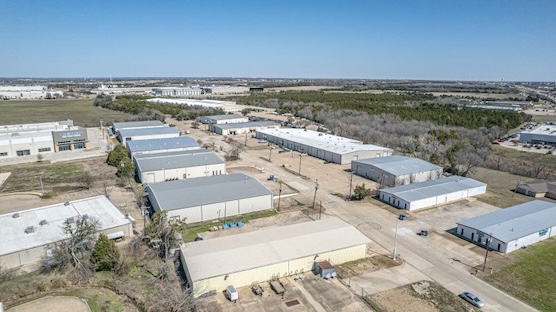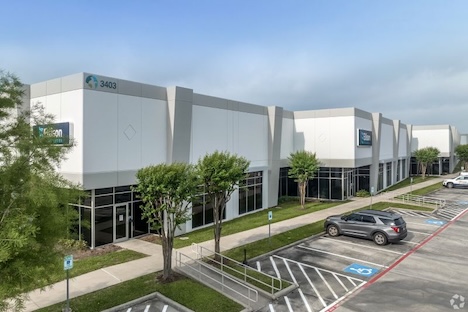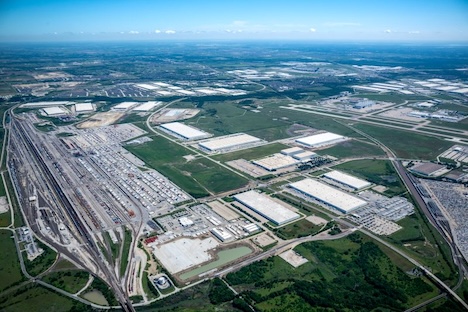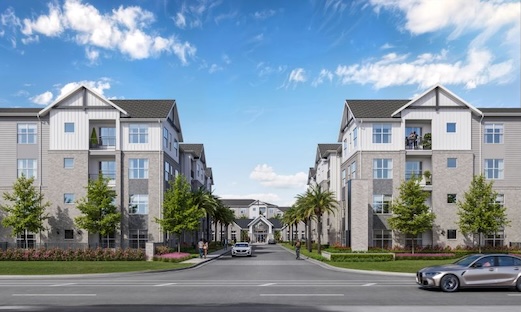Hillwood, BNSF Railway and the City of Fort Worth created the Alliance Logistics District in Fort Worth, Texas.
The district was officially designated and approved by the Fort Worth City Council at its Nov. 11 meeting. Effective immediately, the District will serve as a first-of-its-kind mobility logistics hub within the Smart Port at AllianceTexas, Hillwood’s 27,000-acre, master-planned, mixed-use development in north Fort Worth.
Benefits for District Operators and Customers
The Alliance Logistics District is designed to deliver tangible operational advantages to any operator or customer within its boundaries. Key benefits include:
- The right to deploy semi- and fully autonomous vehicles along district roadways in the freight corridor, supporting next-generation logistics and automation.
- The right to use private hostler vehicles without a commercial driver’s license (CDL) to shuttle freight between BNSF’s intermodal facility and District warehouses, increasing operational efficiencies and reducing regulatory barriers.
- The right to perform heavy-haul freight movements (loads over 80,000 pounds) across District roadways without the need for special-use permits, enabling efficient transport of high-density or oversized goods.
These benefits are available to all users operating within the District, regardless of prior involvement or technical background, ensuring that the District’s innovative infrastructure and regulatory flexibility are accessible and understandable to both new and existing stakeholders. By being co-located with one of BNSF’s largest intermodal facilities, operators and customers can realize significant operational cost savings, enhanced connectivity and improved logistics efficiency.
District Impact and Vision
Anchored by North America’s largest inland rail port, BNSF’s Alliance intermodal facility, the Alliance Logistics District is the first of its kind within BNSF’s rail and intermodal ecosystem and will redefine how freight moves through North Texas while reducing traffic on public roads. By enabling more efficient and cost-effective cargo transport, including autonomous and semi-autonomous shuttle movements as well as overweight and private heavy-haul vehicles, the District will help customers save millions of dollars annually while solidifying North Texas’ position as a national leader in logistics innovation.
In its request to the Fort Worth City Council, Hillwood emphasized that the Alliance Logistics District aligns directly with the City’s 2023 Innovation Districts Policy, which encourages concentrated hubs of research, technology and entrepreneurship within defined geographic areas. Surpassing the City’s established criteria, the Alliance Logistics District will support industries including logistics, automation, and advanced manufacturing — anchored by Perot Field Fort Worth Alliance Airport and the BNSF intermodal facility. The District will also advance innovation-driven employment, smart infrastructure and public-private collaboration to strengthen Fort Worth’s role as a global logistics and technology center.
Spanning nearly 1,400 acres, the District is purpose-built for next-generation industrial development, with direct BNSF rail access and flexible logistics infrastructure designed to support manufacturers and shippers handling heavy, dense or high-value goods — such as ceramics, plastics and auto parts — where speed, efficiency and connectivity are critical.
“By integrating advanced technology, modern infrastructure and regulatory flexibility, this initiative reinforces AllianceTexas’ standing as one of the most connected, forward-thinking logistics ecosystems in the country,” said Nicholas Konen, vice president of strategic development at Hillwood. “These advancements reduce costs for customers, improve logistics efficiency and take pressure off public roadways. Our long-standing partnerships with BNSF, the City of Fort Worth and regional transportation leaders are truly a testament to how public-private collaboration sparks innovation, accelerates industrial development and drives economic opportunity.”
The inland port at AllianceTexas serves as the primary port of entry for the southwestern United States, linking global trade directly to the region through intermodal rail connections from ports including Los Angeles, Long Beach and Houston. As one of only two intermodal logistics hubs in Texas that integrate air, ground and rail transportation, companies can efficiently move goods across all three modes of transit.
“The Alliance Logistics District aligns perfectly with BNSF’s vision to deliver transportation services that consistently meet our customers’ expectations, with these innovations delivering cost savings and additional supply chain value,” said Jon Gabriel, BNSF group vice president of consumer products. “By enabling the delivery of goods from rail to warehouse in a more efficient way, we’re increasing the traffic that can capitalize on the cost, capacity and sustainability benefits of intermodal while creating a scalable model for the next generation of inland ports. This strengthens the region’s freight infrastructure and keeps North Texas at the forefront of global supply chain innovation.”
According to a recently released study by the Texas Comptroller’s office, Texas ports generated $1 trillion in international trade in 2024, with AllianceTexas contributing $834.6 million — a 550.7% increase since 2016.
“Through this public-private partnership, Fort Worth continues to lead in smart, sustainable infrastructure that drives our region’s economic vitality,” said Lauren Prieur, Fort Worth’s director of transportation and public works. “The Alliance Logistics District strengthens our position as a global logistics hub while ensuring forward-looking, responsible transportation planning.”
Accompanied by these operational enhancements, Hillwood’s $20 million investment in a private heavy-haul bridge over FM-156 unlocks the District’s true value, directly linking its 15 million square feet of distribution, logistics, and manufacturing space to BNSF’s Alliance intermodal facility.
Planned to meet TxDOT standards and engineered for 120,000-pound axle loads, the three-lane bridge will enable the efficient movement of heavy-haul freight while reducing truck traffic on public roads. Construction is expected to be completed by late 2026, reinforcing Hillwood’s commitment to next-generation infrastructure that supports industrial growth and regional mobility.









